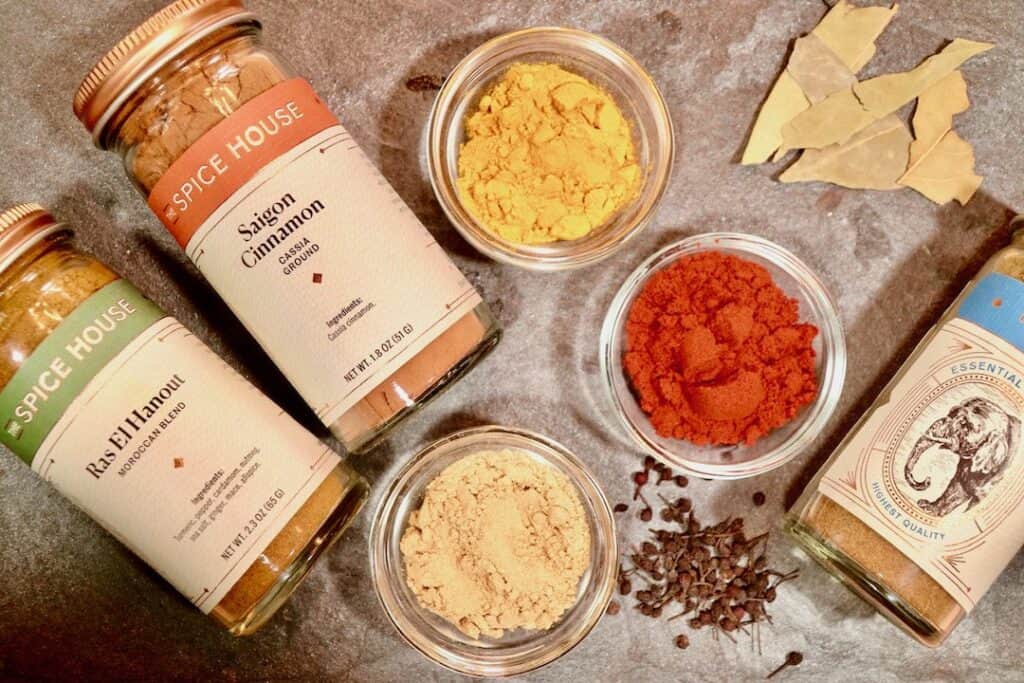SUMMARY: Drying herbs can reduce their nutrient levels, but with proper drying and storage techniques, you can preserve most of their essential nutrients and flavors. Using fresh herbs offers more nutrients but knowing how to select, store, and use them is key to maximizing their benefits.
Ever wonder if your dried herbs offer the same nutritional punch as their fresh counterparts?

This article delves into the science of herb preservation and its effects on nutrient content.
- The essential differences between fresh and dried herbs
- Insight into the nutrient retention of dried herbs
- Techniques to maximize nutrient retention in dried herbs
- Best practices for selecting and using fresh herbs
Continue reading to learn how to make the most nutritious choices between dried and fresh herbs for your meals.
Understanding Herbs: Fresh vs Dried
Herbs play a pivotal role in enhancing the flavor profile of countless dishes, but their benefits extend beyond just taste. They are also prized for their nutritional value, offering vitamins, minerals, and antioxidants. The choice between using fresh or dried herbs is not just a matter of taste but also impacts their health benefits.
Fresh herbs are often celebrated for their vibrant color, distinct aroma, and potent flavor. They are usually added towards the end of the cooking process to preserve these qualities. On the other hand, dried herbs, which have been dehydrated, offer a more concentrated flavor and are typically added at an earlier cooking stage to allow their flavors to infuse throughout the dish.
But how does the drying process affect the nutritional content of herbs? Understanding this can help in making informed decisions about when to use dried or fresh herbs to not only elevate your culinary creations but also maximize their health benefits.
Do Dried Herbs Lose Nutrients
The process of drying herbs inevitably leads to some degree of nutrient loss, primarily due to the exposure to heat, light, and air during drying and storage. However, the extent of this nutrient depletion can vary significantly based on the method of drying employed and the storage conditions thereafter.
Scientific studies suggest that dried herbs can retain most of their essential oils and phytonutrients, although some vitamins, particularly vitamin C and B vitamins, are more susceptible to degradation during the drying process. Despite this, dried herbs remain a concentrated source of antioxidants and minerals, such as iron, magnesium, and calcium.
Drying herbs reduces their water content dramatically, often resulting in a more concentrated flavor and potentially a higher concentration of certain nutrients by weight compared to their fresh counterparts. This concentration effect means that in culinary uses, a smaller quantity of dried herbs may be required to achieve the desired flavor profile compared to fresh herbs.
It’s important to note that the method of drying plays a crucial role in nutrient preservation. Air drying at room temperature or using a dehydrator at low heat settings are considered the best practices for maximizing nutrient retention. In contrast, oven drying at high temperatures can accelerate the loss of sensitive vitamins and phytonutrients.
Proper storage is also vital for preserving the nutritional value and flavor of dried herbs. Keeping them in airtight containers away from light and heat can help maintain their potency for longer periods, typically up to one year.
Maximizing Nutrient Retention in Dried Herbs
Ensuring the nutrient retention of dried herbs involves proper drying and storage techniques. The key is to remove moisture without degrading the valuable nutrients and compounds that give herbs their health benefits and flavors. Here are some well-regarded methods to maximize nutrient preservation during the drying process:
- Air drying: One of the most traditional methods, suitable for herbs with low moisture content like rosemary, thyme, and oregano. Bunch the herbs and hang them upside down in a warm, well-ventilated area away from direct sunlight. This slow drying process helps preserve essential oils and nutrients.
- Dehydrator drying: Using a food dehydrator can be an efficient way to dry herbs while maintaining nutrient levels. This method allows for precise temperature control, typically between 95-115°F (35-46°C), which is optimal for conserving the herbs’ natural compounds.
- Oven drying: Although not the most optimal method due to the risk of overheating, oven drying can be used when other options are unavailable. Set the oven to the lowest possible temperature, leave the door slightly open to allow moisture to escape, and check frequently to prevent burning.
After drying, proper storage is crucial. Store dried herbs in airtight containers away from light and heat. Glass jars with tight-sealing lids are preferred as they do not impart any flavors and protect the herbs from moisture and air, effectively extending their shelf life and potency.
Understanding these techniques and applying them correctly can greatly influence the quality and nutritional value of your dried herbs, allowing you to enjoy their benefits long after the growing season has ended.
The Best Practices for Using Fresh Herbs
Integrating fresh herbs into your diet can significantly enhance the nutritional value and taste of your meals. To maximize the benefits they offer, it’s essential to understand the best practices for selecting, storing, and using fresh herbs. Here are some tips:
- Selection: Look for fresh herbs that appear vibrant and green, without any signs of wilting or browning. Freshness is key to ensuring the highest concentration of nutrients and flavors.
- Storing: To prolong the life of fresh herbs, wrap them in a damp paper towel and store them in a resealable bag in the refrigerator’s crisper drawer. Alternatively, you can place herbs like cilantro and parsley stems in a jar of water and cover them with a plastic bag, refrigerating as needed.
- Washing: Wash herbs right before use to prevent premature wilting. Gently rinse them under cold water and pat dry with a paper towel to remove any dirt or pesticides.
- Incorporation into meals: To preserve their nutritional value and flavor, add fresh herbs towards the end of the cooking process. High heat can diminish their potency, so incorporating them last ensures their beneficial compounds and taste are retained.
By adopting these best practices, you can significantly enhance the nutritional impact and flavor profile of your dishes. Fresh herbs not only contribute vibrant colors and aromas but also supply a variety of essential vitamins and minerals beneficial for your health.
Maximizing Nutrition and Flavor with Fresh and Dried Herbs
In this guide, we’ve explored the critical pathways to maximizing the nutrient content in both fresh and dried herbs, ensuring that your dietary and culinary endeavors are both flavorful and nutritious.
- Fresh herbs offer a vibrant, aromatic addition to dishes, along with a bundle of nutrients when used properly.
- Dried herbs, while losing some water-soluble nutrients during the drying process, still retain a significant amount of vitamins and minerals.
- Proper drying and storage techniques can substantially preserve the nutrient content and potency of dried herbs.
- Choosing between dried and fresh herbs depends on the specific culinary application, with neither being outright better than the other in all scenarios.
- Incorporating a mix of both dried and fresh herbs into your diet can optimize your nutrient intake along with adding variety and depth to your meals.
With the right knowledge and practices, you can make informed decisions about using dried and fresh herbs to not just enhance the flavor of your meals, but also to bolster your diet with necessary nutrients.
Maximizing Nutrients in Dried Vs Fresh Herbs FAQs
What are the most nutrient-dense herbs?
The most nutrient-dense herbs tend to be those with dark, leafy greens such as parsley, basil, and cilantro when fresh. These herbs are packed with vitamins, minerals, and antioxidants. Dried oregano, thyme, and rosemary are also rich in nutrients, particularly antioxidants, when properly dried and stored.
How long do dried herbs retain their nutrients?
Dried herbs can retain most of their nutrients for up to 1-3 years if they are stored in a cool, dark place and in tightly sealed containers. However, their potency in terms of flavor and aroma may decrease over time, which can indirectly suggest a loss in certain nutrients.
Can the process of drying herbs destroy any essential oils?
Yes, the process of drying herbs can lead to a reduction in essential oils, which are responsible for the herbs’ aroma and flavor. The loss varies depending on the drying method used. Slow air drying at low temperatures is preferable to maintain as much of the herb’s essential oils as possible.
Are there any herbs that are better used fresh rather than dried?
Yes, certain herbs are indeed better used fresh to maximize both their nutritional and culinary benefits. Herbs like parsley, cilantro, and basil tend to lose a substantial part of their flavor and nutritional profile when dried. As a result, they are typically more beneficial when used fresh in dishes.
